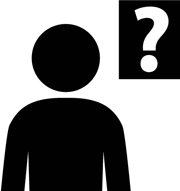Make sense to you?
![]() If you've ever been baffled by an appliance that uses cryptic icons rather than plain English controls, you'll love the Slate article "We're No. 1! But only when it comes to domestic appliances."
If you've ever been baffled by an appliance that uses cryptic icons rather than plain English controls, you'll love the Slate article "We're No. 1! But only when it comes to domestic appliances."
Author Mark Vanhoenacker provides an amusing comparison of microwave oven, stove and washing machine icons used in Europe with their simpler American counterparts.
You can see one of his favorites at right, the flying snowflake found on a microwave oven control panel. What could that possibly mean?
Now, given that in Europe a microwave oven might be purchased and used by someone in France, Germany, Spain or many other countries, labels in English are hardly the solution. But icons like these don't seem to be the way to go either.
Slideshow: American vs. European Domestic Appliances, from Slate.
Website navigation
You may have noticed a similar problem in the design of computer software and website navigation. Maybe taking the saying "A picture is worth a thousand words" a tad too seriously, designers used to try to create a clever icon for every bit of navigation on a website. It sometimes becomes a bit of an ego thing, a challenge to come up with a visual representation for "Margin" or "History" when the word itself is crystal-clear.
The article Seeing the World in Symbols: Icons and the Evolving Language of Digital Wayfinding explains the difficulty:
...digital icons have no corresponding physical object for a user to locate—no staircase, no bathrooms, and no baggage lockers...there is no real-world object that defines its meaning, only the idea of a type of user interaction.
[For example] ...over time, in the Windows operating system alone, the symbol representing a user’s address book has changed from a card file to a tabbed card file to an actual address book. In other operating systems, icons representing an address book vary from a phone book to a Rolodex® card to a composition book with an @ sign emblazoned on the cover.
Fortunately we're starting to learn the lesson. A more recent article, Why icons are bad for website navigation menus, argues that website navigation nearly always works better when it's just text. I find myself moving more and more in that direction. I can appreciate that sometimes the icon can work as a tiny illustration, adding some graphic pizazz to the design. The article above cautions against even that, though:
Icons are a bad idea because, unless the icon’s meaning is clear, visitors have to guess at its meaning and then look to the text for confirmation. This creates cognitive dissonance.
The key question, of course, is whether the icon's meaning is immediately clear. So, as with much of web design, the discussion continues. The conventions that guide design in the digital world are still evolving. We'll see what survives as the fittest in the world of navigation.
More
If you liked this article, you might also enjoy my new (November 2012) collection of good, bad, amusing and confusing restroom signs around the world:
 Which One Is It?
Which One Is It?